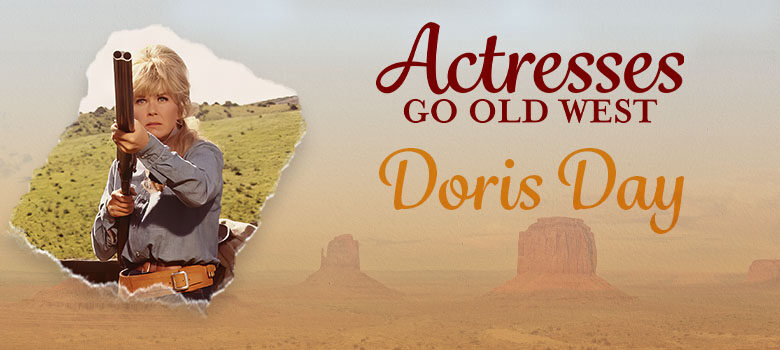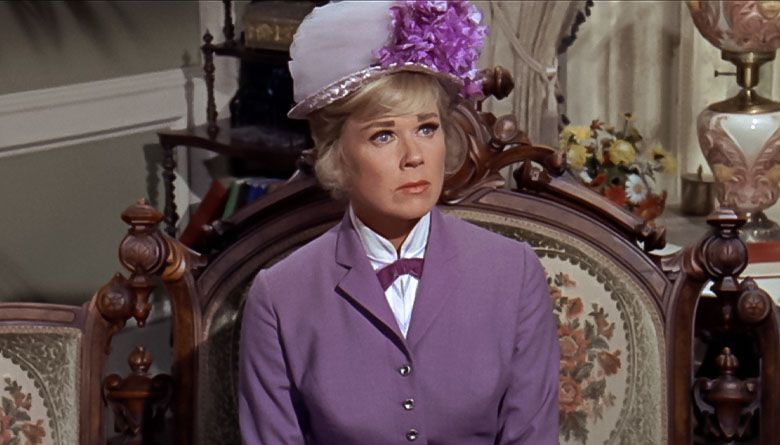Doris Day

Doris Day’s bright and spunky fearless ways were no match for men of the wild west in her 1953 film Calamity Jane. Day was a multi-talented singer, actress, and activist known for being one of the biggest film stars in the 1950s and 1960s. What started as a love for singing turned into an award-winning and lifetime career in Hollywood.
Day was born Doris Mary Kappelhoff, on April 3, 1922, in Cincinnati, Ohio. Day developed an early love for dancing and performed competitively as a young girl. But a car accident in 1937 that collided with a freight train left Day with a broken leg, setting back her career as a professional dancer.
During her recovery, fate stepped in. She spent long days listening to the radio and singing along to the songs. Her mother took note and signed her up for singing lessons. After a year, she began a job singing on the radio and caught the attention of well-known Jazz musician Barey Rapp. He was looking for a female vocalist, and Day got the job over hundreds of others who auditioned.
While working with Rapp, she took on her new stage surname “Day.” Rapp felt that her last name Kappelhoff would be too long for the Marquees at their performances. Her rendition of the song “Day after Day” inspired him, and Doris professionally became Doris Day.
 After two years of touring and singing on the radio, Day got her big break into Hollywood. She was recommended and landed a role in the movie Romance on the High Seas (1948). This led to more roles like her 1951 film I’ll See You In My Dreams, which became her most successful commercial film. It broke box office records for 20 years, and established Day as a mainstay leading lady in Hollywood.
After two years of touring and singing on the radio, Day got her big break into Hollywood. She was recommended and landed a role in the movie Romance on the High Seas (1948). This led to more roles like her 1951 film I’ll See You In My Dreams, which became her most successful commercial film. It broke box office records for 20 years, and established Day as a mainstay leading lady in Hollywood.
Her 1953 western-comedic film Calamity Jane, gained commercial success as well. Day starred as the tough-talking and bold Calamity Jane, who navigates romance, saloons, and life in the Wild West. Day’s song “Secret Love,” from the film won an Academy Award for Best Original Song.
Day found more success in Hollywood with films Young at Heart (1955) with Frank Sinatra, and movies like Love Me Or Leave Me (1955), which was nominated for six Academy Awards. She also starred in Alfred Hitchcock’s suspense film The Man Who Knew Too Much, and sang two songs, with one of them, “Que Sera Sera,” winning an Academy Award for Best Original Song.
From the late 1950s to the 1960s, Day hit her stride again with her film Pillow Talk (1959), earning her an Academy Award nomination for Best Actress. It was the only Oscar nomination in her career. She also starred in the 1967 Western film The Ballad of Josie. During the 60s, she made 12 films and received six Golden Globe nominations for best female performance in three comedies, one drama, and a musical.
The 60s weren’t all about films and fame. Day’s personal life turned tragic when her agent and third husband Mel Melcher died on April 20, 1968. Day also learned that her husband and attorney, Jerome Rosenthal had mismanaged her money and left her in debt. She filed a lawsuit against Rosenthal in 1969 and won her case in 1974.
Before his death, Day’s husband and Rosenthal had also signed her up for a television series which became The Doris Day Show in 1968. Day was reluctant to do the show, which began filming just months after her husband passed away. But she was contractually bound, in debt, and needed the income.
After The Doris Day Show ended in 1974, Day largely retired from acting. In 1978, Day established the Doris Day Animal Foundation and continued her work as an animal activist for the rest of her life. She founded World Spay Day in 1995. She also received the Presidential Medal of Freedom from President George W. Bush for her lifetime achievements in the film and television industry and animal activism.





